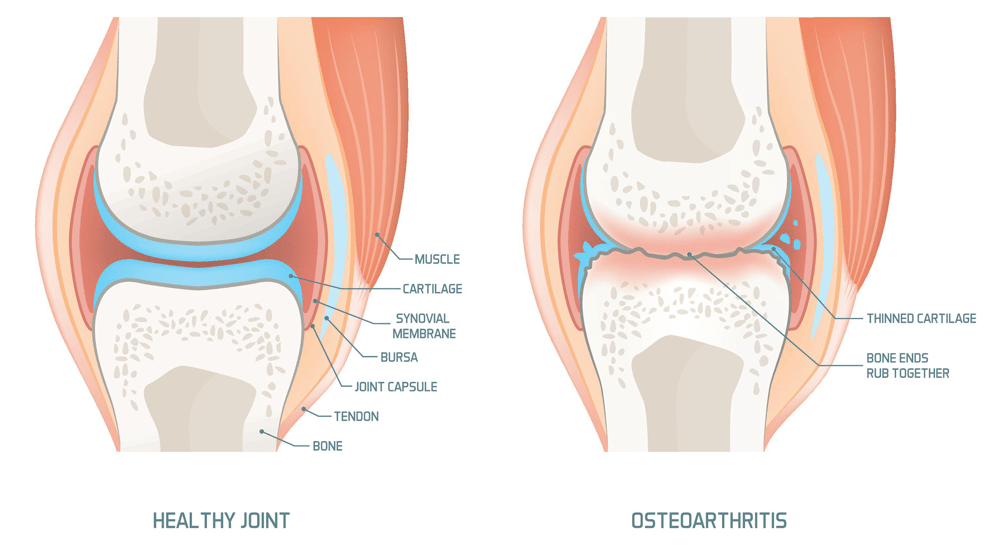Osteoarthritis, the “wear and tear” arthritis, affects millions worldwide, causing pain, stiffness, and reduced mobility in joints. While traditional treatments can manage symptoms, they don’t regenerate lost cartilage. Stem cell therapy emerges as a potential game-changer, offering hope for joint repair. But is it ready for prime time? Let’s delve into the science, potential benefits, and current limitations of this exciting therapy.
Understanding Stem Cells: The Body’s Repair Kit
Stem cells are the body’s master cells, holding the remarkable ability to transform into various specialized cell types, like cartilage cells in your joints. There are two main types used in osteoarthritis treatment:
- Mesenchymal Stem Cells (MSCs): These adult stem cells, often derived from fat tissue or bone marrow, have shown promise in promoting healing and reducing inflammation.
- Umbilical Cord Stem Cells: These stem cells, sourced from donated umbilical cords, possess the potential to differentiate into cartilage cells and support tissue regeneration.
A Glimpse of Hope: Potential Benefits of Stem Cell Therapy
Studies suggest stem cell therapy for osteoarthritis may offer several advantages:
- Pain Relief: Injected stem cells might release substances that reduce inflammation and pain in the joint.
- Improved Function: Stem cells could potentially promote cartilage repair, leading to better joint mobility and function.
- Slowing Disease Progression: Early research suggests stem cells may help slow down the degeneration of cartilage in the joint.
The Reality Check: Current Limitations and Considerations
While promising, stem cell therapy for osteoarthritis is still under investigation. Here’s what to keep in mind:
- Limited Evidence: Large-scale, long-term studies are needed to confirm the efficacy and safety of stem cell therapy for osteoarthritis.
- Varied Results: The effectiveness can vary depending on the type and source of stem cells used, the severity of the condition, and individual factors.
- Unregulated Procedures: Be wary of clinics offering unproven or unregulated stem cell therapies. Ensure the treatment is conducted by qualified healthcare professionals in a research setting or approved clinical trial.
- Cost Factor: Stem cell therapy can be expensive, and insurance coverage might be limited.
The Road Ahead: The Future of Stem Cell Therapy
Researchers are actively exploring ways to improve stem cell therapy for osteoarthritis. This includes:
- Developing Standardized Protocols: Establishing consistent protocols for cell preparation and delivery to ensure optimal results.
- Genetically Modified Stem Cells: Investigating the potential of genetically modifying stem cells to enhance cartilage regeneration.
- Combination Therapies: Exploring the use of stem cells in conjunction with other treatments like physical therapy for a more comprehensive approach.
Taking Charge of Your Osteoarthritis Journey
If you’re considering stem cell therapy for osteoarthritis, it’s crucial to:
- Consult Your Doctor: Discuss your condition and explore all available treatment options, including traditional therapies and physical therapy.
- Research Clinical Trials: Look for ongoing clinical trials testing stem cell therapy for osteoarthritis. You can search for trials on government clinical trial registries.
- Be Wary of Unsubstantiated Claims: Do your research and avoid clinics making exaggerated promises about stem cell therapy.
Conclusion
Stem cell therapy for osteoarthritis holds immense potential, but it’s still in its early stages. If you’re exploring this option, prioritize a conversation with your doctor, manage expectations, and prioritize evidence-based approaches. By staying informed and collaborating with your healthcare team, you can make informed decisions about managing your osteoarthritis and navigate the exciting future of regenerative medicine.






